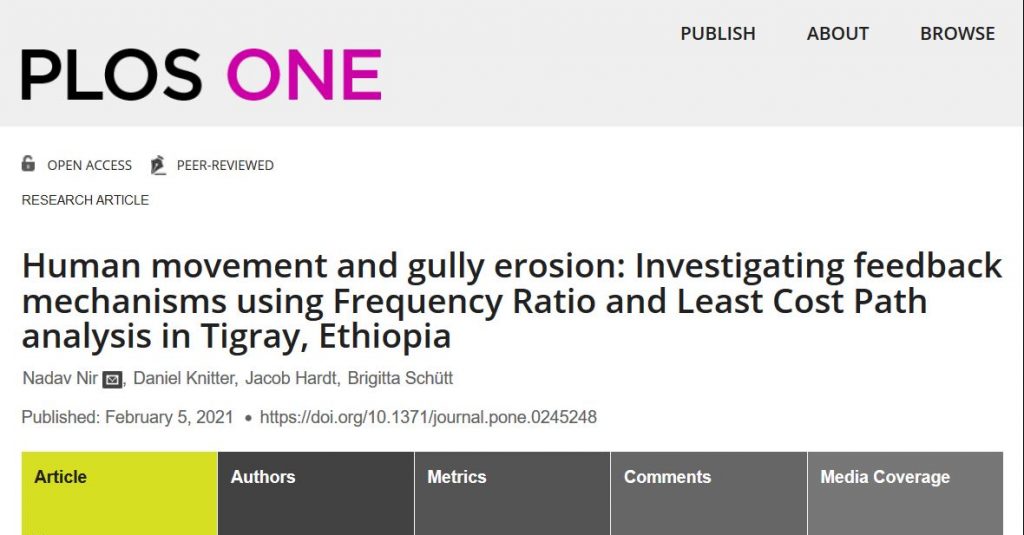N. Nir/D. Knitter/J. Hardt/B. Schütt, Human movement and gully erosion: Investigating feedback mechanisms using Frequency Ratio and Least Cost Path analysis in Tigray, Ethiopia, in: PLoS ONE 16/2, 2021. https://doi.org/10.1371/journal.pone.0245248.
Full Text | PDF Download
Abstract (source: PLOS ONE):
The cost of human movement, whether expressed in time, effort, or distance, is a function of natural and human related variables. At the same time, human movement itself, whether on land, air or sea, causes environmental cost. We are looking into the long-term environmental relationship of this interplay. Gullies—linear landforms, which dissect the landscape—are considered to be a cost for human movement, as they can form unpassable barriers destroying present path networks. On the other hand, human movement creates pathways, which flatten the surface and decrease the water permeability potential. This process results in runoff generation and possibly gully erosion. Accordingly, the spatial relationship between pathways and gullies is investigated. In the Tigray region of the Northern Ethiopian Highlands, gullies and pathways were mapped using remote sensing data. Frequency Ratio was used for assessing pathways as a variable affecting the location of gullies while Least Cost Paths were tested to evaluate the possible constraining impact gullies have on mobility. Based on these results, it is concluded that a positive feedback exists between the cost of human movement and gully erosion. We further discuss possible effects gullies may have had on trade, territory, and political affairs in Tigray. Consequently, we suggest that movement cost and gullying may not only hold strictly environmental or movement-related implications, but also socio-cultural ones.





